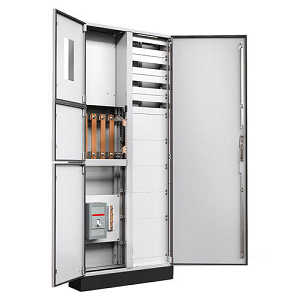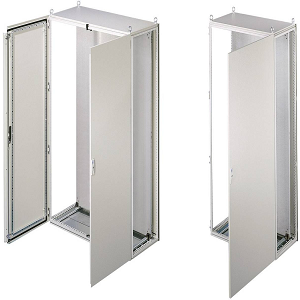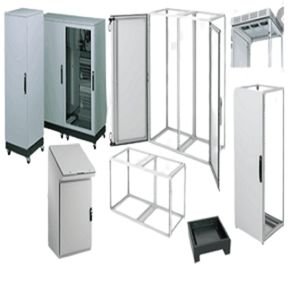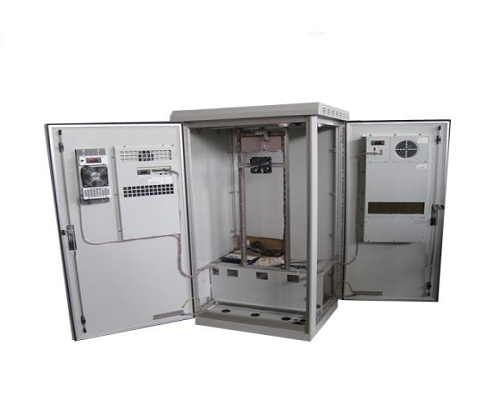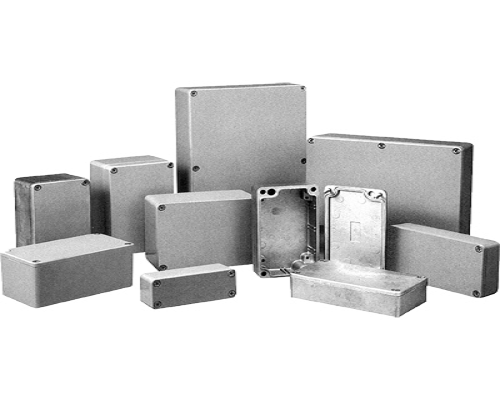هل تحتاج شركتك إلى حاوية معيارية؟ تقدم شركة KDM خيارات متنوعة. الحاويات المعيارية من شركة KDM مصنوعة من مواد عالية الجودة. وهي توفر مرونة نموذجية وسهولة التحكم في المعدات الكهربائية داخل الحاوية.
تتمتع جميع صناديق KDM المعيارية في المصنع بتصنيف تنافسي. هذا هو أفضل صندوق يستخدم لتطوير متطلبات التحويل لعمليات الأعمال الحديثة. يمكن تصنيع هذا النوع من الصناديق لتلبية الاحتياجات المحددة للمنشأة. يتميز بدرجة حرارة تشغيل قياسية وثقل وسمك لا يعرفه سوى فريق KDM.
في الواقع، تأتي أغلفة KDM Modular بأشكال وخصائص ومزايا وخصائص مختلفة تساعد في إعادة تعزيز قدراتك التسويقية. أحد الأسباب العملية وراء بناء أغلفة KDM Modular هو توفير الدعم للأحمال الميسرة للاستخدامات الصناعية. فهي توفر الحماية الكاملة اللازمة للمعدات الصناعية والمحركات وأجهزة التحكم.
- تصميمات العلب المعيارية القياسية
- مفيد لدمج الأعمال
- أداء أفضل
- سهل التشغيل
سلسلة صناديق KDM المعيارية
هذا مزيج من أرقام مكونة من قطعتين؛ زوج من الجدران الجانبية وإطار أساسي. يتضمن التجميع الأساسي لهذه الحاويات المعيارية الأساسية تركيب لوحة كإضافة. تتميز بهياكل فولاذية عالية الجودة.
إن العلبة المعيارية المشتركة التي تقدمها شركة KDM محمية من الأضرار البيئية. فهي تحتوي على تكوينات أحادية الهيكل تقليدية تساهم بشكل كبير في عمليات نظام الطاقة.
هذا هو أحد أنواع الصناديق المعيارية الفريدة من نوعها. توفر الصناديق المعيارية الكهربائية من KDM الموثوقية في تخزين العناصر الكهربائية المختلفة. تُستخدم عادةً في التطبيقات الصناعية وتعد الخيار الأفضل من بين العديد من الصناديق.
تتمتع العلبة الصناعية المعيارية KDM بأغراض مهمة. ومن بين الاستخدامات المهمة توفير الحماية لجميع المعدات الإلكترونية والمعدات الكهربائية أيضًا. وهي تركز بشكل أكبر على توفير عمليات تشغيل فعالة للنظام.
متوفر بألوان مختلفة مثل علب الفولاذ المقاوم للصدأ الرمادية، أو علب الفولاذ المقاوم للصدأ الأبيض، أو علب الفولاذ المقاوم للصدأ السوداء. يمكنك طباعة اسم علامتك التجارية هنا لتحقيق الشهرة.
تتوفر مقابس العلب المعيارية من KDM بأحجام قياسية بعرض 345 ملم وارتفاع 225 ملم وعمق 156 ملم. إذا كنت تريد تخصيصات، فاطلب من KDM تلبية احتياجاتك.
أرسل استفسارك حول صناديق KDM المعيارية
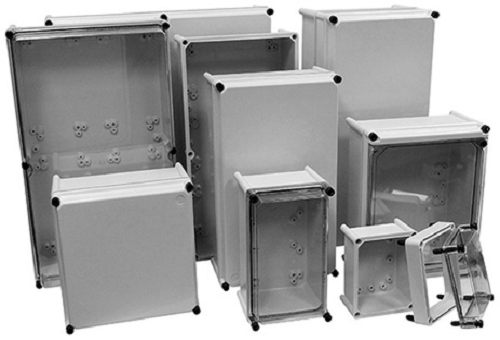

تم تصنيع هذا الغلاف المعياري لتوفير مرونة واقعية. يتم استخدام سعة المرونة لهذه الأداة لتطوير احتياجات التحويل لمزيد من الأعمال. بالإضافة إلى ذلك، عند الشراء بالجملة، من المتوقع تحقيق وفورات مالية ضخمة.
باعتبارها شركة تقدم حلول التغليف المعياري، تواصل شركة KDM تقديم الدعم لأعمال كل عميل. يتم تقديم الكثير من المخزونات من قبل مصنعنا. ومع ذلك، للحديث عن تطبيقاتها المهمة، فهي مناسبة للتطبيقات الصناعية والتجارية. يسهل تطبيقها وتثبيتها للتطبيقات الأخرى.
- تتمتع بخبرة واسعة في إنتاج العبوات المعيارية
- شركة مصنعة ذات سمعة طيبة في الصين
- الشركة المصنعة معتمدة بالكامل
- حظيرة كبيرة مبنية
منتج ذو صلة بالوحدات الملحقة المعيارية
الحاويات المعيارية: حل مريح وبسيط وطويل الأمد

تُعد الحاويات المعيارية أجهزة حماية أمان مرنة وسهلة التركيب وسهلة الصيانة وتوفر المساحة للمعدات الكهربائية أو الإلكترونية، وهي بديل للحاويات المتجانسة لحماية المعدات.
ما هو الغلاف المعياري؟

العلبة المعيارية هي نوع من العلب التي يمكن تجميعها ونقلها وتوصيلها بوحدات داخلية وخارجية بمرونة. بخلاف العلب المتجانسة التي تركز على السلامة والمتانة، توفر العلب المعيارية مرونة كبيرة واستغلالًا ممتازًا للمساحة في التطبيقات التي تتطلب استبدالًا وصيانة وتوسعة متكررة.
هيكل العلبة المعيارية

يتكون هيكل العلبة المعيارية من إطار، ولوح، وقاعدة، وهيكل تثبيت داخلي، وأقفال ومفصلات، ونظام توصيل، ونظام تبريد وتهوية، مع مستويات حماية مختلفة، يمكن تخصيص كل منها وتوسيعها بحرية. إن فهم هيكل العلبة المعيارية يُسهّل اكتشاف مرونتها العالية وقابليتها للتوسع. وفيما يلي شرح مفصل لمكونات العلبة المعيارية.
إطار: يُصنع الإطار عادةً من الفولاذ المقاوم للصدأ وسبائك الألومنيوم، وهو مصمم ليكون خفيف الوزن وعالي المتانة. عادةً ما تتبع الأبعاد والواجهات بين الإطارات تصميمًا موحدًا، ويمكن تفكيكها وتوسيعها وتعديلها باستخدام هياكل ربط المقاطع.
الألواح: تتكون ألواح الهيكل المعياري عادةً من لوحة أمامية، ولوحة خلفية، وألواح جانبية، ولوحة علوية، والتي تُمكّن، مع شرائط العزل، من عزل الهيكل تمامًا. ألواح الأبواب في التصميم المعياري قابلة للإزالة لسهولة التركيب والصيانة، وهي متوفرة عادةً بألواح معدنية صلبة، وألواح مهواة، وألواح زجاجية شفافة، وأنواع أخرى.
قاعدة: سيتم حجز القاعدة كدعم لاستيراد وتصدير الكابلات، وإدارة الأسلاك المريحة، وقاعدة العلبة المعيارية، وهناك العديد من الأنواع، مثل القاعدة الثابتة، والقاعدة القابلة للتعديل، أو مع قاعدة الأسطوانة لتسهيل الحركة المرنة للعلبة المعيارية.
نظام التركيب: يُعد نظام التثبيت جزءًا أساسيًا من الهيكل المعياري، ويُستخدم لتثبيت وتركيب المعدات أو المكونات الداخلية لمنع التلف الناتج عن الحركة أو الاهتزاز. يمكن تطبيق أنواع عديدة من أنظمة التثبيت على الهياكل المعيارية، وهي:
- لوحات التركيب
- قضبان التركيب
- حوامل التثبيت
- قضبان منزلقة
- صواني التركيب
- إطارات التركيب
- الحوامل المغناطيسية
الأبواب والمفصلات: ستجد مجموعة واسعة من الخيارات للمفصلات والأقفال في الحاويات المعيارية، مثل المفصلات التي تدعم التصميمات القياسية والسريعة الفك، وأنظمة التحكم في الوصول الذكية مع أقفال ميكانيكية وكهرومغناطيسية اختيارية.
نظام الموصل: يُعد نظام التوصيل أحد المكونات المهمة في العلبة المعيارية، ويُستخدم لربط نقل الإشارات والبيانات بين الأجهزة الداخلية والخارجية للعلبة، مما يضمن إمكانية توصيل العلبة المعيارية بسلاسة مع الأجهزة الأخرى لتحقيق توسع مرن. يدعم نظام التوصيل العلبة المعيارية بالطرق التالية.
- التوصيل الكهربائي
- نقل الإشارة
- نقل البيانات
- توسيع الوحدة
التبريد والتهوية: منع ارتفاع درجة حرارة المعدات داخل العلبة، وهو أمر مهم في البيئات ذات درجات الحرارة العالية وفي السيناريوهات التي تتطلب التحكم في درجة الحرارة.
نظام الحماية: يُعد نظام الحماية أحد الأنظمة الأساسية للهيكل المعياري، ويشمل التأريض وتصميمًا مقاومًا للاهتزازات والصدمات. ويتم تحديد نطاق استخدام الهيكل المعياري ومستوى الحماية بناءً على قدرة الهيكل على مقاومة الغبار والماء ومقاومة التآكل.
حجم الحاويات المعيارية

تتوفر الخزائن المعيارية بأحجام متنوعة لتناسب مختلف أنواع وأحجام المعدات، وتوفر الحماية ومساحة التركيب. سنشرح أدناه بإيجاز الأحجام الثلاثة القياسية للخزائن المعيارية لمساعدتك على فهمها بشكل أفضل.
- حاوية وحدات صغيرةيتراوح حجمها عادةً بين 100 و400 مم، وتُستخدم لحماية المعدات الإلكترونية، وأجهزة المرافق منخفضة الطاقة، وأجهزة الاستشعار، ومحطات الطاقة الصغيرة. لا تتطلب هذه العلب عادةً مساحة داخلية كبيرة، وبالتالي يُمكن تركيبها على الحائط، وغالبًا ما تُستخدم في الأماكن المغلقة. توفر العلب المعيارية الصغيرة حماية كهربائية ضئيلة، ويمكن أن تلبي تصنيفات الحماية من IP30 إلى IP65.
- حاوية معيارية متوسطة الحجم: تتراوح أحجامها النموذجية بين 500 مم و1200 مم، وتُستخدم عادةً في غرف الحاسوب وغرف توزيع الطاقة للتعامل مع الأحمال الكهربائية الكبيرة والتوصيلات الكهربائية نظرًا لقابليتها للتوسع. عادةً ما تُركّب علب الوحدات متوسطة الحجم على الأرضية أو على الرفوف، وتتطلب تصنيف حماية IP55 أو IP65 أو أعلى.
- حاوية معيارية كبيرة: تُستخدم عادةً بأحجام تتراوح بين 1300 مم و2200 مم، وتُستخدم في البيئات الصناعية ومراكز البيانات وقطاع الطاقة، حيث تُستخدم غالبًا لاستيعاب كميات كبيرة من المعدات الكهربائية وأنظمة التحكم المعقدة. معظم العلب المعيارية الكبيرة مُصممة للتركيبات المعيارية لتلبية احتياجات المعدات الكبيرة، مثل خزائن الخدمة الكبيرة، ومعدات محطات التوزيع، وغيرها، والتي تتطلب مستوى حماية عاليًا، IP67 أو أعلى.
أنواع مختلفة من الحاويات المعيارية

تُقدّم العلب المعيارية حلاً بسيطًا ومرنًا لحماية المعدات. نستعرض أدناه أنواع العلب المعيارية المختلفة من أربعة جوانب لنمنحك فهمًا أفضل لتصنيفات جهدها وبيئات تشغيلها ومتطلبات حمايتها.
1. حسب مستوى الجهد
- حاوية معيارية منخفضة الجهدمناسب للأنظمة الكهربائية حتى 1000 فولت تيار متردد، 1500 فولت تيار مستمر. يُستخدم هذا النوع من العلب المعيارية عادةً في أنظمة الأتمتة الصناعية، وإدارة المباني، وغرف الخوادم، وتوزيع الطاقة الصناعية. تشمل الأنواع الشائعة: خزائن توزيع الجهد المنخفض، لوحات التحكم الصناعية و رفوف خادم تكنولوجيا المعلومات.
- حاوية الجهد المتوسط المعيارية: مناسب لأنظمة نقل وتوزيع الجهد المتوسط من 1000 فولت إلى 35 كيلو فولت، بما في ذلك 10 كيلو فولت، 24 كيلو فولت، 35 كيلو فولت، وغيرها من الفولتات. تتطلب العلب المعيارية للجهد المنخفض تخصيصًا بمستويات عزل أعلى، مثل عزل الهواء والفراغ والغاز، لتحسين السلامة والاستقرار، وهي...يتم تركيبها عادة في محطات فرعية، وتوزيع الطاقة الصناعية، والنقل بالسكك الحديدية، ومحطات توليد الطاقة. الأنواع الشائعة هي: معدات التبديل ذات الجهد المتوسط، الوحدة الرئيسية الحلقية (RMU)، حاوية محطة الجهد المتوسط.
- حاوية معيارية عالية الجهد: مناسب لأنظمة نقل وتوزيع الجهد العالي التي تزيد عن 1000 فولت تيار متردد، بما في ذلك 10 كيلو فولت، 35 كيلو فولت، 110 كيلو فولت، وحتى 220 كيلو فولت. يلزم استخدام مواد عازلة عالية الجودة لمنع انهيار الجهد العالي، ويمكن استخدام عزل الغاز أو الفراغ لتحسين السلامة، وعادةً ما يتم تركيبه في محطات فرعية ومحطات توليد الطاقة وأماكن أخرى. الأنواع الشائعة هي مفاتيح الجهد العالي، مفاتيح معزولة بالغاز (GIS)، صندوق توزيع كابلات الجهد العالي.
2. وفقًا للبيئة
- حاوية داخلية معيارية: صُممت العلب المعيارية الداخلية للتركيب في غرف الخوادم والمصانع والمباني التجارية والسكنية. الأنواع الشائعة هي خزانات توزيع الطاقة، وخزانات التحكم الصناعية، وغيرها. تتطلب هذه العلب المعيارية عادةً تصنيف IP65.
- حاوية خارجية قابلة للتعديل: عادةً ما تواجه هذه الأنواع من علب الوحدات ظروفًا مناخية قاسية، لذا يجب مراعاة خصائصها المقاومة للرياح والأمطار والتآكل والغبار والصدمات. يُشار إليها عمومًا بنظامي IP وNEMA، ومن الأنواع الشائعة: خزانة القاعدة، وخزانة الشاحن، وغيرها.
3. وفقًا لميزات الحماية
- العلبة المعيارية القياسية: مناسب للبيئات التجارية والصناعية العامة، ويهدف بشكل رئيسي إلى حماية المعدات الكهربائية والإلكترونية داخل العلبة من التلامس العرضي أو دخول الغبار أو تناثر السوائل. غالبًا ما تُصنع هذه العلب المعيارية من الفولاذ المدرفل على البارد، أو الفولاذ المقاوم للصدأ، أو سبائك الألومنيوم، بتصنيف IP20~40.
- غلاف مقاوم للماء والغبار: يتطلب هذا النوع من العلب المعيارية عزلًا عاليًا، ويُستخدم عادةً في البيئات الصناعية الخارجية الرطبة والمغبرة، وخاصةً في إنتاج الفولاذ المقاوم للصدأ 304 وسبائك الألومنيوم، مع طبقة طلاء خاصة مقاومة للتآكل. يُشترط عادةً الحصول على مستوى حماية IP66 أو IP67 أو أعلى.
- حاوية معيارية مقاومة للانفجار: مناسب للاستخدام في البيئات الصناعية الخطرة التي تحتوي على غبار وغازات قابلة للاشتعال والانفجار، ويجب أن يتوافق مع معايير السلامة مثل ATEX وIECEx. تُصنع هذه العبوات المعيارية عادةً من الألومنيوم والفولاذ المقاوم للصدأ مع أختام معززة، وتتميز بتصميمات آمنة ذاتيًا ومقاومة للهب ومعززة للسلامة.
4. وفقًا للإنشاءات المختلفة
- حاوية مستقلة قابلة للتركيب: عادةً ما تُصمَّم العلب المعيارية المستقلة بألواح قابلة للإزالة، وقضبان تثبيت قابلة للتعديل، وأجهزة توسعة لسهولة توسيع الوحدة وتخصيصها وتركيبها لاحقًا. تُستخدم عادةً في المجالات التي تتطلب صيانة دورية وتوسعة واسعة، مثل الخدمات الصناعية والكهربائية والمعلوماتية.
- حاوية معيارية قابلة للفتح: تُستخدم العلب المعيارية القابلة للتركيب بشكل شائع في مراكز البيانات ومحطات التحكم في الطاقة وخطوط الإنتاج الآلية، وتُوحد عادةً في أنظمة رفوف مقاس 19 بوصة. يُتيح تصميم التوصيل المعياري توسيع علب متعددة بسهولة، ويتيح دمجها جنبًا إلى جنب، مما يوفر سهولة كبيرة في دمج المعدات واسعة النطاق.
فوائد الحاويات المعيارية

بعد التعرف على أنواع الحاويات المعيارية المناسبة، يمكننا أيضًا اكتشاف مزاياها الأخرى.
-
قابلة للتخصيص بدرجة كبيرة
تعد القدرة على التخصيص بدرجة كبيرة واحدة من أهم ميزات الحاويات المعيارية، ليس فقط من حيث الحجم والمادة والنوع وفتحات الارتباط المحجوزة والألواح القابلة للإزالة وما إلى ذلك، ولكن أيضًا من حيث تصنيفات حماية NEMA وIP لسيناريوهات الاستخدام المختلفة.
-
التثبيت المرن
من أهم مزايا الخزائن المعيارية سهولة ومرونة التركيب. بفضل مكوناتها القابلة للإزالة، تتوافق الخزائن المعيارية مع مجموعة واسعة من أحجام ومقاييس المعدات لتلبية متطلبات التصميم المختلفة. وبالمقارنة مع الخزائن المتراصة الأكثر صلابة، يمكن للخزائن المعيارية أيضًا استيعاب مجموعة متنوعة من طرق التركيب، مثل التثبيت على الأرض، والتثبيت على الرفوف، والتثبيت على الحائط.
-
سهولة التوسع
تتميز العلب المعيارية بهيكل داخلي مرن، كما أنها سهلة التركيب والتوسيع. ويمكن ربطها بسهولة، باستخدام فتحات التوصيل أو الشرائح المخصصة، لتكوين أنظمة متكاملة كبيرة تلبي احتياجات أكثر.
-
سهلة الصيانة
تعتمد سهولة صيانة العلب المعيارية بشكل كبير على مرونتها وقابليتها للتبديل. فباستخدام ألواح وشرائح قابلة للإزالة، يمكن تفكيك الأجزاء التي تحتاج إلى صيانة أو استبدال جزئيًا دون التأثير على الأجزاء الأخرى.
-
كفاءة المساحة
يُعدّ الاستخدام الفعّال للمساحة ميزةً هامةً للوحدات المعيارية المغلقة، خاصةً في البيئات المعقدة والمساحات المحدودة، إذ تُتيح توفير مساحة الأرضية من خلال التكديس، أو التركيب جنبًا إلى جنب، أو التركيب الرأسي، أو وضعها أفقيًا أو رأسيًا. كما تُتيح الوحدات المعيارية المغلقة دمج وحدات متعددة في وحدة واحدة من خلال واجهات موحدة، مما يُقلل المساحة الإجمالية المطلوبة ويتيح تخزينًا عالي الكثافة دون هدر أي مساحة.
-
أمان
من المفاهيم الخاطئة الشائعة حول سلامة العلب المعيارية أنها ليست بنفس مستوى أمان العلب المتجانسة. مع ذلك، يُراعى في تصميم العلب المعيارية نفس الدرجة من الاهتمام بكيفية تعظيم حماية المعدات، لذا فهي، مثل العلب المتجانسة، مزودة بخصائص مقاومة للماء والغبار والصدمات والانفجار والحرائق، وغيرها، وتختلف هذه الخصائص باختلاف التطبيقات، مثل الصناعات والمصانع الكيميائية والتعدين وصناعات الطاقة.
-
أداء عالي التكلفة
بسبب مرونة التوسع والصيانة، على الرغم من أن العبوات المعيارية أكثر تكلفة في البداية من العبوات المتجانسة، إلا أنها أكثر فعالية من حيث التكلفة على المدى الطويل لأنها تتجنب الاستبدال والتفكيك المتكرر.
مجالات تطبيق الحاويات المعيارية

تتمتع العبوات المعيارية بمجموعة واسعة من التطبيقات وتُستخدم على نطاق واسع في مختلف الصناعات، وفيما يلي بعض الصناعات الشائعة التي يمكنها الاستفادة من العبوات المعيارية.
1. مركز البيانات والحوسبة السحابية
تُعد العبوات المعيارية جهاز تخزين وحماية شائع في مراكز البيانات، حيث تتمتع مراكز البيانات بمتطلبات عالية للغاية للتوسع والصيانة السريعة، ولا تتكيف العبوات المتجانسة بشكل كامل مع هذا الطلب المستمر على الحوسبة والتخزين.
2. الأتمتة الصناعية والتحكم الكهربائي
في صناعة الأتمتة الصناعية والتحكم الكهربائي، تُستخدم الحاويات المعيارية على نطاق واسع في الصناعة لأنها تسمح باستبدال وحدات التحكم بشكل أسرع بالإضافة إلى القدرة على تعديل تكوينات المعدات بسهولة وفقًا لاحتياجات الإنتاج، مما يوفر مرونة أكبر من الخزانات المكونة من قطعة واحدة.
3. الطاقة المتجددة
في صناعة الطاقة المتجددة، حيث تحتاج وحدات الطاقة إلى التكيف بشكل متكرر مع مقياس الطاقة والتوسع والصيانة بشكل ديناميكي وفقًا للمقياس، يمكن للوحدات النمطية التكيف مع بيئات الطاقة المتغيرة وتوفير تعديل سهل.
4. صناعة النقل العام
من خلال التصميمات المخصصة المستهدفة، يمكن تخصيص الحاويات المعيارية بميزات مثل مقاومة الاهتزاز وحماية EMI والمراقبة عن بعد لتوفير حماية مريحة ومرنة للمعدات في السكك الحديدية والقطارات وأنظمة النقل العام الأخرى المعرضة للاهتزاز.
5. الاتصالات السلكية واللاسلكية واتصالات الشبكات
الميزة الأهم لمعدات الاتصالات هي الحاجة إلى التوسع السريع للمنافذ والوظائف، وهناك طلب كبير جدًا على النشر السريع. تستطيع العلب المعيارية التكيف مع الطلب المتزايد على التوسع والاستعداد لأي تكوينات إضافية محتملة في أي وقت عن طريق حجز الفتحات.
6. محطات الاتصالات الأساسية
في محطات الاتصالات الأساسية، تتميز الهياكل المعيارية بأداء ممتاز. بفضل هيكلها الداخلي المرن وتوافقها العالي، يمكنها تحسين المساحة الداخلية والخارجية إلى أقصى حد، مما يضمن تشغيلًا مستقرًا وآمنًا وطويل الأمد.
7. البناء والبنية التحتية
يتم تثبيت الحاويات المعيارية بشكل أساسي في المباني وأنظمة إدارة الطاقة، وتضبط وحدات الطاقة والتحكم وفقًا لاحتياجات المبنى، مما يتيح التوسع والصيانة بشكل أسرع وأكثر تراجعًا من الحاويات المتجانسة، مما يحسن الكفاءة.
خاتمة

بشكل عام، تتميز العلب المعيارية بمرونة التوسعة، وسهولة التركيب، وسهولة الصيانة، وقابلية التخصيص العالية لمجموعة واسعة من التطبيقات، وقد أصبحت الخيار الأمثل لحماية المعدات الكهربائية والصناعية وغيرها. ننصحك بتقييم قطاع التطبيق والبيئة المحيطة قبل شراء وتركيب وتخصيص علبة معيارية لمعداتك، لضمان أفضل النتائج.



